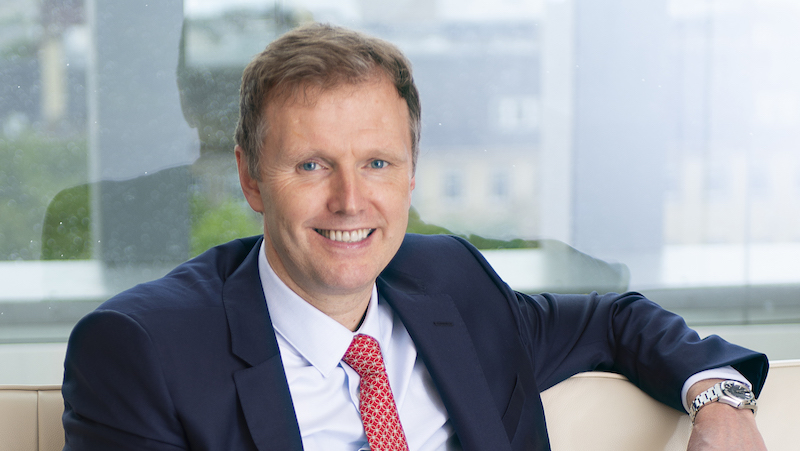Aberdeen Standard Investments’ foray into passive investments should be relatively smooth, given barriers to entry in the sector are low, but the asset manager faces a bigger task making the business profitable in an industry dominated by Vanguard, Blackrock and State Street.
Earlier this month, Standard Life Aberdeen chief executive Stephen Bird told Bloomberg he wanted the £512bn fund house to increase passive investments from 10% to 30%. He said this was so the firm could deliver a range of solutions so clients stick with one provider for all their investing needs.
“If you stay as an old traditional asset class asset manager, you will be extinct,” he told the publication. “But if you say I’m going to go closer to my clients, I’m going to listen more intently to them, I’m going to connect to them more seriously, then you’re high value.”
ASI has struggled to hold on to active assets
Bird’s focus on passive comes as the firm struggles to hold on to its actively managed assets. According to Morningstar data, ASI’s total net assets for all active strategies, including money market funds, have halved from £64.1bn in August 2017, the month Standard Life Investments and Aberdeen Asset Management merged, to £32.1bn at the end of October 2020.
Its flagship Global Absolute Return Strategies (Gars) fund was ranked in 2017 as the UK’s largest fund at £21.6bn, but it has dwindled to £3.7bn in size. Investors have pulled £1.1bn though outflows are down considerably from 2019.
Broadening the firm’s presence in the exchange traded fund market is therefore a focus for Bird though he is open on how the firm would grow its business in the space, telling Bloomberg: “We can either buy proprietary ETF technology, buy an ETF business or build it.”
Infrastructure is already in place
SLA is not known for being a passive house but it is not a stranger to the style and already has the infrastructure. Last year, it was able to cling on to about £30bn of passive Scottish Widow pension assets that Lloyds bank had wanted to pass to Blackrock. It also bought the US business of ETF Securities in 2018.
Bird was appointed CEO in the autumn but the push into passive has already begun. Last month, SLA unveiled a platform that allows investors to track an array of hedge fund benchmarks. This followed in the same month the launch of range of sustainable index funds aimed at pension funds and other institutional investors.
ASI global head of ETFs – specialist distribution Patrick Mattar says having been involved in ETFs right from the first European launch in 2000, he fully understands the challenges that lie ahead for a new ETF issuer.
“What is so exciting though, is ASI’s mix of quantitative and fundamental research and analysis and fusing that together into new ETF launches,” he says. “I began my career at Standard Life in 1997 as a graduate active manager and now, over 20 years later, the line between passive and active that was once so divisive, has blurred to insignificance. Our focus is to deliver new and innovative products at a price point that offers value to investors.”
Low barriers to entry should help ASI grow in passives
Seven Investment Management senior portfolio manager Peter Sleep says the barriers to entry to the passive market are low, especially if, like SLA, infrastructure such as legal, compliance and IT, is already in place.
He notes there have been several new entrants in the last two years including HanETF and Rize ETF and there are others in the pipeline. On Tuesday, US firm Global X unveiled a European ETF business to be led by a team of senior executives, including individuals hired from JP Morgan and BMO.
But while barriers to entry are low, the barriers to profitability are a bit higher, says Sleep. The cost of index tracking products has been cut to the bone as behemoth fund houses compete for a share of the $12trn of passive assets under management, according to Morningstar.
“The challenge is to make the passive business profitable given the wafer thin margins involved,” he adds. “In order to make money from passive investments SLA will need to compete against some tough competitors like Blackrock, Vanguard or State Street.”
Ready made distribution channels
But SLA does have its own distribution channels, including its online platform and a wealth manager arm that could channel flows to the passive business that would otherwise go to competitors, says Sleep.
According to Lang Cat data for the end of Q3, the combined Standard Life and Elevate platforms have the largest market share in the advised platform sector, with £62.7bn of assets under administration.
Lang Cat consulting director Mike Barratt agrees this gives SLA a strong channel to distribute new investment solutions. But, he adds it will be crucial for SLA to ensure these solutions are designed to meet the needs of advised clients.
“The vast majority of adviser firms will run a centralised investment proposition, using either internal or external model portfolios,” he says. “Any product development would need to fit into these structures, and the low cost nature of passives could mean it will be attractive to advisers.”
Advisers looking to cut investment costs
Lang Cat research also shows that 27% of advisers say the use of passives underpins their investment proposition, with more than half (55%) say it can form an effective part of a wider investment offering.
And when advisers are looking to cut costs, it is generally the investment part of their service that bears the brunt.
“Our research also shows that, perhaps unsurprisingly, when an adviser is looking to drive down the cost of investing it will be the investment solution as opposed to the platform and/or the advice fee that is most likely to be reduced.”







